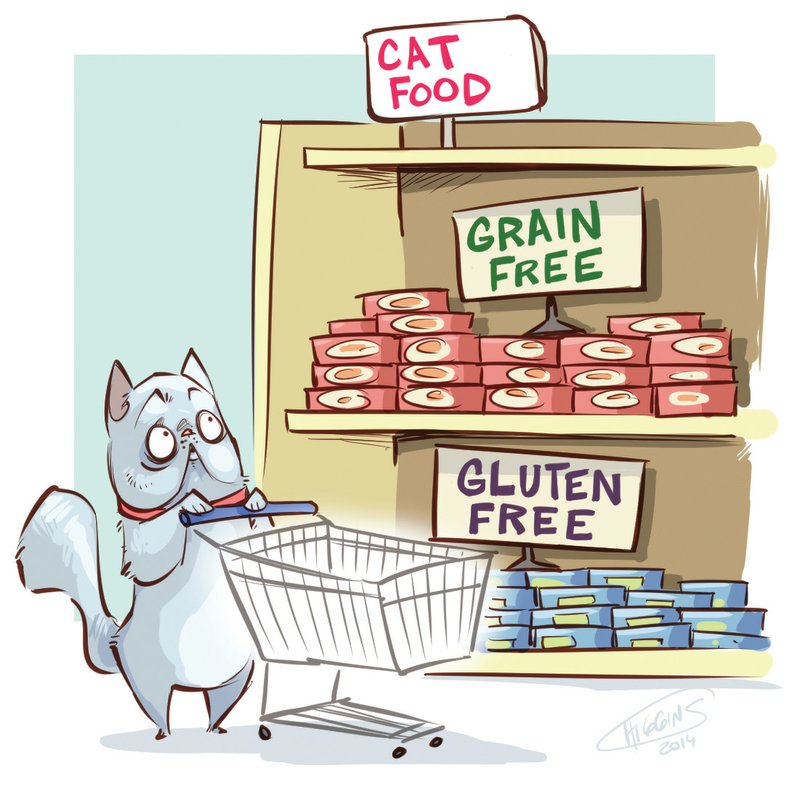When I was at the pet store to get food for my cat, I saw a couple of brands that were labeled "grain-free." I also saw one that's supposed to be "gluten-free." What does that mean?
"Grain-free" is the hottest new pet food trend, with more and more of these foods popping up in the wake of humans' own health concerns about grains and gluten.
Foods free of grain are necessary for people who are sensitive to gluten (the elastin or binding agent in wheat, barley, rye and whole grains related to wheat) or have celiac disease, an immune reaction to gluten that causes serious and painful illness. But cats don't have a sensitivity to gluten, according to veterinary nutrition professor Cailin Heinze of the Tufts University Cummings School of Veterinary Medicine. In an article in the July issue of Catnip, Heinze says there's no scientific or medical reason whatsoever for cat owners to worry about grain or gluten.
"It's 100 percent marketing," Heinze says in Catnip. "There is no benefit for a cat to being on a grain-free diet."
The grain-free hoopla brings up the issue of whether cats, which are "obligate carnivores" or meat-eaters, really need any kind of carbohydrate such as a grain. Heinze says that cats don't have a dietary need for carbohydrates, but their digestive systems tolerate them. Actually, cats do more than tolerate grains because the added fiber from grains can improve a cat's gastrointestinal functions.
Carbohydrates in cat food also help in weight control. Protein-only cat foods are high in fat, which means they are also high in calories.
The label "grain-free" confuses the carbohydrate issue overall, Heinze says, noting that people believe no grains means there are no carbohydrates in cat food. But grains function as the binding agent that makes it possible to create dry food.
Wysong Corp., a company that makes "natural" and premium pet foods, explains the role of grains and starch in pet food at wysong.net: "Grains are added to dry extruded pet food kibble because the starch they contain permits the kibble to form in processing -- similar to popcorn popping. If grains are not used, then some other form of starch must be used, such as potato or tapioca."
Wysong and Heinze note that starch is starch, but the nutritional value of grains as starch is better than other starches, particularly tapioca, because the body converts the other starches into sugar -- which can be just as detrimental to a cat's health as to a human's. "Tapioca is like straight-up sugar," Heinze says in Catnip.
Finding "grain-free" on cat food labels doesn't mean that food is superior to another type of cat food, but means that pet-food marketers have found another way to appeal to pet owners. It's akin to making a pet food look like and smell like beef stew -- the pet doesn't care, but the food seems more palatable by human standards.
Pet owners who want more information on how to interpret pet-food labels can visit the Pet Food Institute website, petfoodinstitute.org, for a guide to ingredients and labeling, or email questions to info@petfoodinstitute.org. The American College of Veterinary Nutrition also helps demystify pet food selection at acvn.org, where people can also get in touch with certified veterinary nutritionists for advice on what to feed their pets.
The Association of American Feed Control Officials has extensive information about pet food regulation, feeding trials, testing, nutritional labeling -- just about anything related to pet food -- at petfood.aafco.org.
Family on 09/17/2014
